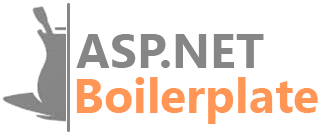In this document
Introduction
Hangfire is a compherensive background job manager. You can integrate ASP.NET Boilerplate with Hangfire to use it instead of the default background job manager. You can use the same background job API for Hangfire. As such, your code will be independent of Hangfire. If you like, you can directly use Hangfire's API, too.
Hangfire Integration depends on the frameworks you are using.
ASP.NET Core Integration
The Abp.HangFire.AspNetCore package is used to integrate to ASP.NET Core based applications. It depends on Hangfire.AspNetCore. This document describes how to install hangfire to an ASP.NET Core project. It's similar for ABP based projects too. First install the Abp.HangFire.AspNetCore package to your web project:
Install-Package Abp.HangFire.AspNetCore
You can then install any storage for Hangfire. The most common one is SQL Server (see the Hangfire.SqlServer NuGet package). After you have installed these NuGet packages, you need to configure your project to use Hangfire.
First, we change the Startup class to add Hangfire to dependency injection, and then configure the storage and connection string in the ConfigureServices method:
services.AddHangfire(config =>
{
config.UseSqlServerStorage(_appConfiguration.GetConnectionString("Default"));
});
We then add the UseHangfireServer call in the Configure method:
app.UseHangfireServer();
If you want to use hangfire's dashboard, you can add it, too:
app.UseHangfireDashboard();
If you want to authorize the dashboard, you can use AbpHangfireAuthorizationFilter as shown below:
app.UseHangfireDashboard("/hangfire", new DashboardOptions
{
Authorization = new[] { new AbpHangfireAuthorizationFilter("MyHangFireDashboardPermissionName") }
});
The configuration above is the standard way to integrate hangfire to an ASP.NET Core application. For ABP based projects, we should also configure our web module to replace Hangfire for ABP's default background job manager:
[DependsOn(typeof (AbpHangfireAspNetCoreModule))]
public class MyProjectWebModule : AbpModule
{
public override void PreInitialize()
{
Configuration.BackgroundJobs.UseHangfire();
}
//...
}
We added AbpHangfireAspNetCoreModule as a dependency and used the Configuration.BackgroundJobs.UseHangfire method to replace Hangfire for ABP's default background job manager.
Hangfire requires the schema creation permission in your database since it creates its own schema and tables on first run. See the Hangfire documentation for more information.
ASP.NET MVC 5.x Integration
The Abp.HangFire NuGet package is used for ASP.NET MVC 5.x projects:
Install-Package Abp.HangFire
You can then install any storage for Hangfire. The most common one is SQL Server (see the Hangfire.SqlServer NuGet package). After you have installed these NuGet packages, you can configure your project to use Hangfire as shown below:
[DependsOn(typeof (AbpHangfireModule))]
public class MyProjectWebModule : AbpModule
{
public override void PreInitialize()
{
Configuration.BackgroundJobs.UseHangfire(configuration =>
{
configuration.GlobalConfiguration.UseSqlServerStorage("Default");
});
}
//...
}
We added AbpHangfireModule as a dependency and used the Configuration.BackgroundJobs.UseHangfire method to enable and configure Hangfire ("Default" is the connection string in web.config).
Hangfire requires the schema creation permission in your database since it creates its own schema and tables on first run. See the Hangfire documentation for more information.
Dashboard Authorization
Hangfire can show a dashboard page so you can see the status of all background jobs in real time. You can configure it as described in its documentation. By default, this dashboard page is available for all users, and is not authorized. You can integrate it in to ABP's authorization system using the AbpHangfireAuthorizationFilter class defined in the Abp.HangFire package. Example configuration:
app.UseHangfireDashboard("/hangfire", new DashboardOptions
{
Authorization = new[] { new AbpHangfireAuthorizationFilter() }
});
This checks if the current user has logged in to the application. If you want to require an additional permission, you can pass into its constructor:
app.UseHangfireDashboard("/hangfire", new DashboardOptions
{
Authorization = new[] { new AbpHangfireAuthorizationFilter("MyHangFireDashboardPermissionName") }
});
Note: UseHangfireDashboard should be called after the authentication middleware in your Startup class (probably as the last line). Otherwise, authorization will always fail.
Limitations
More than one background jobs in a single transaction isn't supported by Hangfire. Because, Hangfire does not participate the current transaction. It does not use the ambient transaction (TransactionScope).
It works with default background job manager since it simply performs a db command and it belongs to the current transaction as expected.
